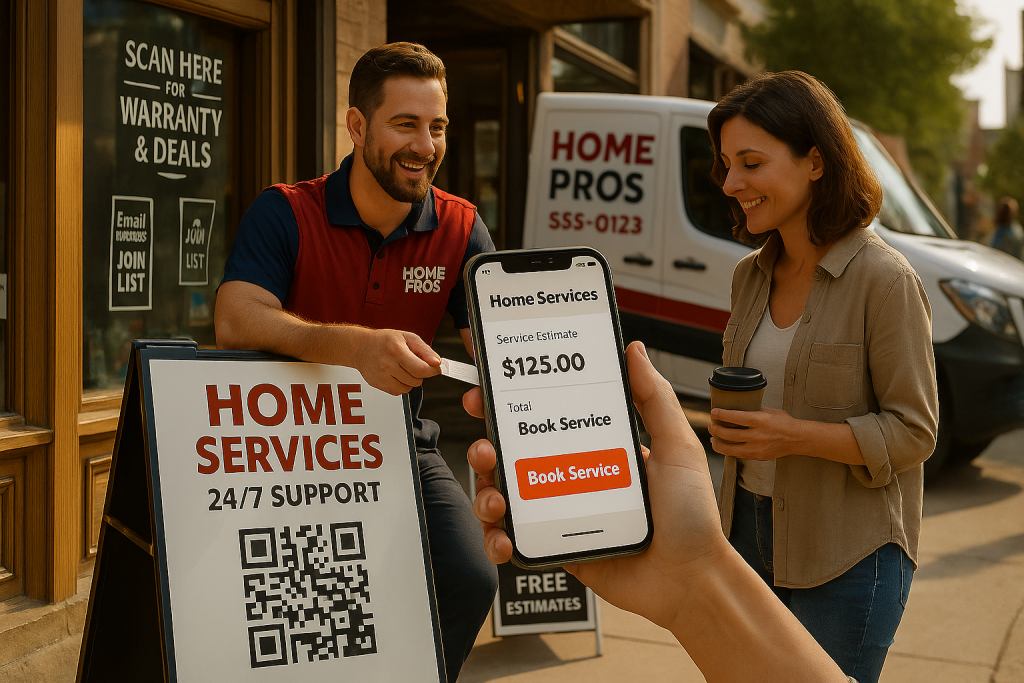Lead generation: It’s not just a marketing term, but a pivotal process that identifies those potential customers who express genuine interest in your product or service.
In the era of information overload, consumers are armed with boundless sources of knowledge. Podcasts, illuminating videos, insightful blog posts, and the dynamic world of social media are just the tip of the information iceberg that can steer their preferences towards one brand over another.
If your mission is to attract these prospective customers, you’ll know all too well the hurdles that come with generating high-caliber leads.
In this article, we are set to delve deeper into the engine room of lead generation. We will dissect the various categories of leads you might encounter and supply practical strategies and illustrations for lead generation that you can jumpstart immediately.
As you cruise through this information journey, keep in mind the essence of our approach at Hyper Fuel: our content aims to enlighten and educate, sparking your motivation to act. We don’t just talk at you; we engage in a conversation, sharing relatable narratives that resonate with our diverse audience. We break down industry jargon to ensure accessibility, balancing it with appropriate professional terms, explained in a clear, understandable manner.
We see ourselves in a vibrant, energetic color palette, reflecting our brand’s dynamism in our visuals, all the while maintaining consistency in our aesthetic appeal. Remember, we are not just recounting facts; we are telling our story, sharing our values, and inviting you to be part of our journey towards fuel efficiency and power.
Remember, this isn’t merely a blog post. It’s an invitation to join the Hyper Fuel family and navigate the journey to sustainable, efficient energy. In every line, you’ll find embedded SEO keywords, enabling you to locate our content more easily on your digital map. Buckle up, and let’s drive into the world of lead generation!
A Deep Dive into Customer Acquisition
Lead generation could be likened to a strategic formula in the marketing world, devised to capture and attract potential consumers who resonate with your products or services.
This methodology functions much like a high-octane fuel, designed to establish a connection with consumers at an early stage of their buying journey. The objective is to gain their trust, foster a meaningful relationship, and ensure that when they’re at the brink of a purchasing decision, they choose your brand over others.
However, akin to a fuel mixture’s multifaceted performance role, lead generation is not limited to customer acquisition alone. It serves as a potent agent for broadening brand awareness, gathering crucial customer data, and nurturing brand loyalty.
With this holistic perspective, it’s essential to note that every visitor on your website or physical store doesn’t necessarily qualify as a lead. Successful lead generation, much like fuel efficiency optimization, involves identifying specific targets and utilizing an array of platforms and strategies, which include:
- Landing pages – Much like a performance data tracking system, landing pages collect vital information about visitors, which can later be used to target them for sales.
- Email – As an opt-in tool, email serves as a superb lead generation instrument, as the recipients are already acquainted with your brand.
- Social media – With unparalleled engagement opportunities, your social media platforms can spur your targets to act, akin to a sudden thrust in engine performance.
- Blogs – Establishing authority while offering value, blogs serve as an excellent platform to promote specific offers, much like our Hyper Fuel blog that you are currently perusing.
- Live events – Like real-time race data, live events enable qualifying leads as they provide an opportunity to meet your target audience and swiftly identify potential high-value customers.
- Promotions and coupons – Offering a discount or a complimentary item can motivate targets to share their contact information, much like a fuel reward program.
The strategy that works best for your brand will hinge on your specific niche and audience. As you experiment with various lead generation strategies, you may discover a tactic that outperforms others. It would be prudent to prioritize that channel, while others might not yield any substantial results.
But let’s not get ahead of ourselves.
Before delving into the nuances of various strategies, let’s first delve into understanding the nature of leads.
Decoding the Spectrum of Lead Types
Sales could be envisaged as the engine that powers the machinery of any business. Without sales, revenue generation comes to a halt, and in the absence of revenue, the business loses its very essence. Thus, the importance of sales is unparalleled.
However, this vast domain varies significantly from industry to industry. The sales strategy of a medical monitoring sensor vendor stands in stark contrast to a pre-owned car dealer. Despite their diverse approaches, one common thread binds all sales professionals: the crucial need to focus the majority of their efforts on individuals most likely to purchase.
Broadly speaking, leads can be categorized into seven distinct types, much like the nuanced components of a high-performance engine:
- Hot Leads – These leads are primed for conversion, akin to an engine revved up and ready to race. They are interested in your offering and possess the necessary qualifications. This might be a purchasing director who’s had multiple conversations with you and has experienced a product demo. They wield purchasing power and are bound by a timeline.
- Cold Leads – Potential customers who might be unfamiliar with your brand or offering, much like those unaware of the intricacies of hyper-fuel technology. Currently, they’ve shown no interest in what you’re selling. Generally, these leads pose the most challenges for conversion.
- Warm Leads – Occupying a space between hot and cold leads, these individuals are aware of your brand and offerings, similar to those who know what hyper fuels are but haven’t quite appreciated their benefits yet. They’re your video viewers or blog readers who haven’t contacted you directly. Your objective is to warm them up into hot leads.
- Information Qualified Leads (IQLs) – This lead category consists of those who’ve exhibited interest in your company and responded to a call to action. Perhaps they subscribed to your newsletter or completed a lead generation form. They’re in the pursuit of more information and will likely respond favorably to nurturing campaigns.
- Marketing Qualified Leads (MQLs) – Progressing further down the sales pipeline from IQLs, MQLs are actively seeking a solution that meets their requirements and exploring if yours fits the bill. These are the leads who download your whitepapers, watch your informative videos, and participate in your seminars.
- Sales Ready Leads (SRLs) – Also known as “accepted leads,” these are your potential customers at the bottom of the funnel, on the verge of making a purchase, much like an engine primed and ready to fire. It’s crucial to understand their budget, purchasing authority, needs, and timelines.
- Sales Qualified Leads (SQLs) – These leads are at the starting line, ready to make a purchase and should be communicating with your sales team. They are indeed the hottest leads, but remember, they might still be considering your competitors, similar to how racing teams often consider multiple fuel options.
Each of these lead types plays a unique role, and understanding these distinctions is crucial in developing an effective sales strategy. In the end, it’s all about ensuring your sales engine is well-fueled and running at peak performance.
Understanding the Customer Journey
Like a well-organized relay race, lead generation involves several steps in a process. Your approach may vary based on whether you’re emphasizing inbound or outbound generation, but regardless, the pathway should be similar.
Step 1: Embark on a Research Quest
Prior to launching your lead gathering endeavor, a comprehensive understanding of your target audience is crucial. This is not just about knowing who they are, but discerning their location, values, and most critically, their pain points—especially the most immediate ones.
Creating customer personas can be beneficial in this phase, allowing you to define the demographics, budget, and needs of potential customers. Considerations might also include social habits, professional backgrounds, and psychological traits.
Once you’ve identified your targets, the next step is to determine their hangouts. Are they regular Facebook users, or are they more responsive to email? This will be dictated by your specific circumstances.
Simultaneously, evaluating the competition is key. What are they offering, and how does your offering stand apart? What makes it superior?
Step 2: Craft Valuable Content
With the understanding of your potential customers’ needs, you’re equipped to create content that addresses them. The chosen medium will influence your content format—for instance, social media is well-suited for videos, but emails aren’t.
Similarly, if Twitter is your primary platform, your in-depth blog posts will need to be linked or condensed.
Remember, your focal point should be providing value. Every content piece should have a clear purpose, whether it’s educating the audience about your product, raising brand awareness, or promoting a sale.
Step 3: Construct a Lead Generation Database
Regardless of how promising your leads may be, they won’t bring any benefit if not managed appropriately.
Establishing a lead database where potential customers can be recorded, analyzed, and segmented is essential. A streamlined approach would be to employ an automated CRM system, minimizing the manual labor involved.
Most CRM systems facilitate the tagging of leads based on their type and level of interest, enabling your sales team to sift through their lists more efficiently, concentrating efforts on those most likely to convert.
Step 4: Qualify and Score Leads
Every lead will be at a different stage in the sales funnel. Some are ready to make a purchase immediately, while others may just be exploring options.
Your strategy should adapt to this reality.
Many companies employ a lead scoring system on a 1-100 scale to approximate a lead’s position in the customer journey. Points are assigned based on actions, with more significant actions earning more points.
For instance, following your Facebook page might earn 10 points, filling out a “Request a demo” form could be worth 20, and opening and reading an email might earn 5. If a lead performs all these actions, their lead score would be 35.
These numbers offer a general idea of their position, from new leads making initial contact, to working leads with whom you’ve begun a conversation, nurturing leads who aren’t currently interested but may be in the future, unqualified or “dead” leads who aren’t interested in your offering, and qualified leads eager to do business with you.
Naturally, leads with a higher likelihood of converting should receive more of your time and energy. By understanding and implementing this journey, you’ll be geared up to drive your sales engine effectively.
Generating Momentum: Lead Generation Strategies
There’s no shortage of avenues for lead generation, but here, we’ll explore some of the most prevalent strategies and their successful real-world applications.
Content Marketing
Content marketing is a potent tactic involving the creation of engaging, value-driven content that stirs interest in your business. This can include a broad range of mediums, from newsletters, podcasts, and videos to social media posts.
You can leverage content marketing throughout the sales funnel—building brand awareness through timely blogs, generating demand via insightful white papers, boosting organic traffic via SEO, fostering trust, and securing customer loyalty.
To optimize your efforts, provide numerous opt-in opportunities, sweetened by incentives like discounts or value-added guides.
Email Marketing
Despite the onslaught of new marketing channels, email remains a stalwart due to its effectiveness. A Mailchimp study found that 22.71% of marketing emails were opened, with even higher rates in certain sectors.
Email marketing offers affordability and the potential for personalized, segmented content that encourages engagement. Additionally, with a robust CRM system, you can track key metrics like open rate, engagement time, and subscriber retention, fine-tuning your campaigns accordingly.
Social Media Marketing
Social media platforms are ubiquitous, providing vast opportunities for lead generation. With platforms allowing direct interaction with followers and targeted advertising, your outreach can be tailored to highly specific audiences.
Social media also makes interaction effortless with straightforward CTAs, such as Instagram Stories’ skip option and Twitter’s truncated URLs. Additionally, it’s an ideal platform for contests or sharing gated content.
Coupons, Discounts, and Free Trials
Overcoming customer reluctance to share contact information can be tricky, but offering tangible value in return is an effective strategy. Risk-free trials or discount codes can overcome sales resistance and provide opportunities for retargeting with additional offers.
Online Ads
Display advertisements—those videos and images that appear while browsing websites, apps, and social media—alongside paid search and PPC, offer great exposure to your target customers. They are versatile tools, useful for targeting leads at various stages of the buying journey and promoting awareness, sales, or new products.
Referral Marketing
Leveraging your existing customers to find new leads can be highly fruitful. Incentivizing them to write reviews or refer friends in exchange for a reward can significantly bolster your lead funnel.
Referral marketing’s strength lies in its authenticity and trustworthiness, outpacing any in-house marketing effort. Over 99.9% of online shoppers read reviews, and 94% of consumers state that positive reviews make them more likely to patronize a business.
In the realm of lead generation, there is no ‘one size fits all’ strategy. The key is to find the right combination that best suits your brand and audience, using a blend of different tactics to maximize success.
Level-up Your Lead Gen Game
Lead generation is an art and a science, requiring an understanding of your audience and an ability to use data effectively. Here are some best practices that can help you optimize your lead generation strategy:
- Harness the Power of Data
Data provides insights into your audience and their behavior. By analyzing successful past campaigns, you can discern patterns and understand what resonates with your audience. Look for common themes or unique strategies in high-performing content that could be replicated for future success.
- Consistency is Key
Ensure your messaging is clear, consistent, and aligned with your brand across all channels. Your ultimate goal isn’t just to gather data, but to build a lasting relationship with your audience, eventually converting them into customers.
- Test, Test, and Test Again
A/B testing is a crucial tool for improving performance. It allows you to compare different versions of your content and understand what works best. Whether it’s the headline, images, or body copy, keep testing to optimize engagement.
- Leverage CRM Technology
A good CRM tool can streamline the lead generation process by gathering information about your targets, tracking their behavior on your website, and identifying what attracts them. This data can be used to refine your campaigns and better target your audience.
- Tailor Offers to Each Stage
Customers at different stages of the buying journey have different needs. Ensure you have appealing offers for each stage and clear CTAs across your content.
- Integrate Social Media
Social media is a powerful tool for engaging with leads at all stages of the buying journey. It provides a platform for initiating conversations and creating relationships with your potential customers.
- Keep Landing Pages Clean and Clear
Present your information in an easily digestible format, with the most important information at the top and clear points for visitor interaction.
- Collaborate with Partners
Co-marketing is an effective strategy for lead generation, allowing you to reach a larger audience and attract new leads through the efforts of partner companies.
- Engage Your Sales Team
The sales team plays a crucial role in the lead generation process. Include them early in the process for valuable insights and to ensure consistent messaging.
- Never Underestimate Remarketing
Remarketing is an essential strategy for re-engaging potential customers who didn’t make a purchase on their first visit. It’s a powerful tool for turning potential customers into actual ones and amplifying all your marketing activities.
Lead generation might be hard work, but it’s vital for the growth and financial health of your business. With a focus on high-quality leads and a willingness to continuously refine your strategy, you can effectively nurture potential customers and drive new sales. Remember, it’s a marathon, not a sprint – patience and persistence are key in seeing the results you want.
Ready to implement a profitable lead generation strategy for your business? Drop us a message or schedule a call with our lead generation experts for a free consultation.





